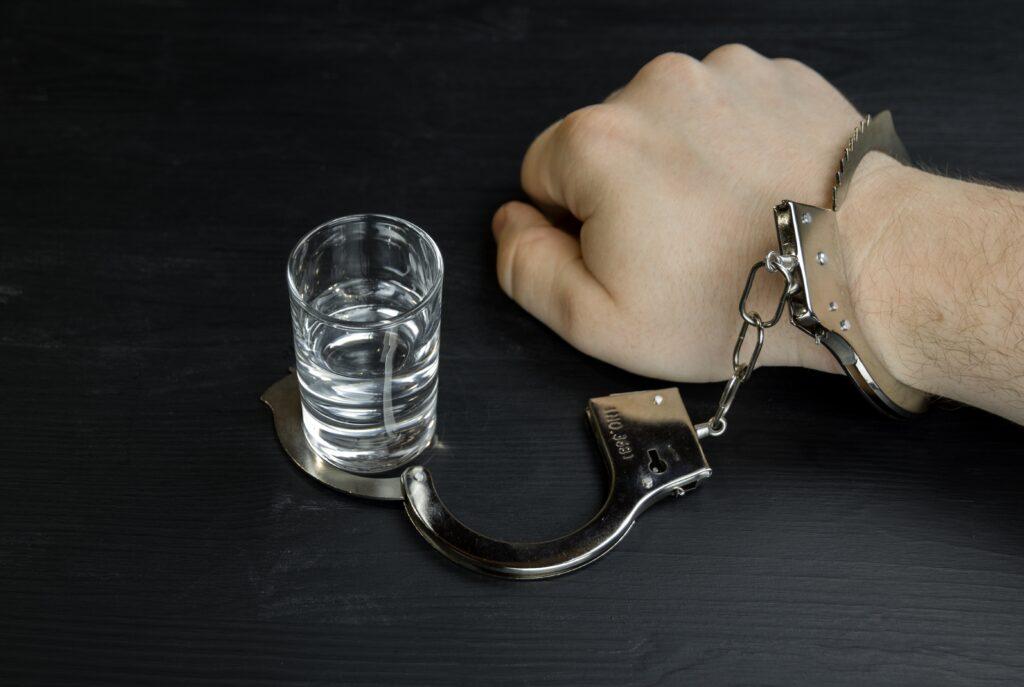What Is Post Acute Withdrawal Syndrome?
Post-Acute Withdrawal Syndrome (PAWS) is a condition that can occur in individuals who have recently stopped using drugs or alcohol. PAWS is a set of symptoms that occur after the acute withdrawal period, typically the first few weeks after stopping the substance use. PAWS can last weeks, months, or even years and can be a significant barrier to recovery.
PAWS is not a specific diagnosis but a collection of symptoms that can vary from person to person. Some common symptoms of PAWS include anxiety, depression, irritability, fatigue, insomnia, and difficulty concentrating. Symptoms of post acute withdrawal can be intense and significantly impact an individual’s ability to function daily.
PAWS occurs because the brain and body have become accustomed to drugs or alcohol. When an individual stops using, the body must readjust to functioning without the substance. This can result in various physical and psychological symptoms as the body and brain try to rebalance.
Post acute withdrawal symptoms usually grow to peak intensity over a few days to several weeks after the acute withdrawal phase has ended. During this time, individuals may experience various physical and emotional symptoms that can interfere with their daily functioning and quality of life. The duration and severity of acute substance withdrawal syndrome post acute withdrawal syndrome can vary depending on the individual’s history of substance use, overall health, and other factors.
The duration and severity of PAWS can depend on several factors, including the type of substance used, the duration and frequency of use, and the individual’s overall health. Individuals with a history of substance use disorder or who have experienced multiple withdrawal episodes may be at a higher risk of developing PAWS.
Managing PAWS requires a comprehensive approach that addresses physical and psychological symptoms. This may include medication-assisted treatment, therapy, and support groups. Individuals in recovery need to understand that PAWS is a normal part of the recovery process and that managing these symptoms and achieving long-term recovery with the right support is possible.
In conclusion, PAWS is a complex condition that can significantly impact an individual’s ability to maintain sobriety. Understanding the symptoms and potential risk factors for PAWS can help individuals in recovery prepare for and manage this challenging aspect. With the right support, individuals can successfully navigate PAWS and achieve a healthy, fulfilling life in recovery.
Post Acute Withdrawal Symptoms
Post-Acute Withdrawal Symptoms (PAWS) occur after the acute withdrawal from substance use disorder. PAWS can be a challenging and frustrating experience for those in recovery, as it can last for weeks, months, or even years after the initial withdrawal period.
PAWS can vary in severity and duration, and different substances may result in different PAWS symptoms. PAWS can also be influenced by individual factors, such as the duration and frequency of substance use and the individual’s overall health.
PAWS can have both physical and psychological symptoms, and they can often overlap. The physical symptoms may include fatigue, insomnia, increased sensitivity to pain, and physical coordination problems. Psychological symptoms may include anxiety, depression, irritability, mood swings, difficulty concentrating, and memory problems.
Anxiety is one of the most common psychological symptoms of PAWS. Anxiety can be both a physical and mental experience and can range from mild to severe. Individuals may experience constant worry or fear, have difficulty controlling their thoughts or feelings, and experience physical symptoms like sweating, shaking, or shortness of breath.
Depression is another common psychological symptom of PAWS. Depression can cause feelings of sadness, hopelessness, and despair. Individuals may experience a lack of motivation, low energy levels, difficulty sleeping, and changes in appetite.
Irritability is a symptom that can be difficult to manage and can negatively impact relationships with others. Individuals may feel easily agitated, frustrated, or angered and have difficulty controlling their emotions. Mood swings may also occur, and individuals may experience sudden shifts in their emotional state, from extreme happiness to deep sadness.
Difficulty concentrating is another common psychological symptom of PAWS. Individuals may have difficulty focusing on tasks or completing them and have trouble with memory or recall. This can be frustrating and can negatively impact work or school performance.
Physical symptoms of PAWS can also be challenging to manage. Fatigue is a common symptom that can significantly impact daily functioning. Insomnia can also occur, making getting the rest necessary for healing and recovery difficult. Increased sensitivity to pain may also occur, making it more challenging to manage other physical symptoms.
In conclusion, Post-Acute Withdrawal Symptoms (PAWS) can significantly challenge individuals in recovery. Symptoms can be both physical and psychological and last for an extended period. It’s important to recognize and manage these symptoms to ensure the best possible outcome for individuals in recovery. Individuals can learn to manage these symptoms and achieve long-term recovery with the right support.

Skip To:
Learn More:
- Oxycodone Withdrawal Symptoms, Timeline & Treatment
- Phenibut Withdrawal, Symptoms, Timeline & Treatment
- Marijuana Withdrawal Symptoms, Prevention & Treatment
- Tramadol Withdrawal Symptoms, Timeline & Treatment
- Meth Symptoms of Addiction, Side Effects, and Withdrawal
- Is Tizanidine Addictive? Effects, Withdrawal & Treatment
- Baclofen Withdrawal: Symptoms, Interactions, Timeline & Detox Treatment
- Crack Withdrawal
- Benzo Detox Treatment
- Prescription Pill Detox Program
Get Help. Get Better. Get Your Life Back.
Searching for Accredited Drug and Alcohol Rehab Centers Near You?
Even if you have failed previously and relapsed, or are in the middle of a difficult crisis, we stand ready to support you. Our trusted behavioral health specialists will not give up on you. When you feel ready or just want someone to speak to about therapy alternatives to change your life call us. Even if we cannot assist you, we will lead you to wherever you can get support. There is no obligation. Call our hotline today.
(844) 597-1011Most Popular Post Acute Withdrawal Syndrome (PAWS) FAQs
-
How Long Does Acute Withdrawal Last?
-
What Is Acute Withdrawal?
-
What is Post Acute Withdrawal Syndrome Marijuana?
-
What is The Acute Withdrawal Meaning?
Post Acute Withdrawal Syndrome Factsheet
Post Acute Withdrawal Syndrome Overview
Post-Acute Withdrawal Syndrome (PAWS) is a set of physical and psychological symptoms after acute withdrawal from substance use disorder. These symptoms can last weeks, months, or even years, significantly hindering recovery. PAWS occurs because the brain and body have become accustomed to drugs or alcohol. When an individual stops using, the body must readjust to functioning without the substance. Managing PAWS requires a comprehensive approach that addresses both physical and psychological symptoms.
Post Acute Withdrawal Syndrome Treatment
Treating Post-Acute Withdrawal Syndrome (PAWS) requires a comprehensive approach that addresses physical and psychological symptoms. Treatment options include medication-assisted treatment, therapy, and support groups. Medications can be used to manage specific symptoms such as anxiety or depression.
At the same time, therapy can help individuals learn coping skills to manage symptoms and address underlying issues related to substance use disorder. Support groups, such as 12-step programs, can also provide individuals with a supportive community of peers who understand their experiences. Treatment of PAWS should be individualized to address each person’s unique needs in recovery.
Post Acute Withdrawal Syndrome Symptoms
Here are some common symptoms of Post-Acute Withdrawal Syndrome (PAWS) that individuals in recovery may experience:
- Anxiety: a constant sense of worry or fear, difficulty controlling thoughts or feelings, and physical symptoms like sweating, shaking, or shortness of breath.
- Depression: sadness, hopelessness, despair, lack of motivation, low energy levels, difficulty sleeping, and changes in appetite.
- Irritability: easily agitated, frustrated, or angered, difficulty controlling emotions.
- Mood swings: sudden shifts in an emotional state, from extreme happiness to deep sadness.
- Difficulty concentrating: difficulty focusing on tasks or completing them, trouble with memory or recall.
- Fatigue: a feeling of exhaustion that can significantly impact daily functioning.
- Insomnia: difficulty sleeping, making getting the rest necessary for healing and recovery challenging.
- Increased sensitivity to pain makes managing other physical symptoms more challenging.
It’s important to remember that PAWS symptoms can vary in severity and duration and may differ based on the substance used and individual factors.
Post Acute Withdrawal Syndrome Statistics
Post Acute Withdrawal Syndrome (PAWS) is a condition that affects individuals who have gone through the acute phase of substance withdrawal. It can persist for weeks or even months after detoxification and can be characterized by various physical and psychological symptoms. PAWS can occur with various substances, including alcohol, opioids, and benzodiazepines. To better understand the impact of PAWS, it’s important to look at some statistics related to the condition.
90%
Pp to 90% of individuals undergoing alcohol or opioid detoxification experience some form of Post Acute Withdrawal Syndrome (PAWS).
Source: SAMHSA
2 years
The average duration of PAWS symptoms is around 14 months, with some lasting up to 2 years.
Source: Journal of Addiction Medicine
65%
Individuals who experience PAWS are at an increased risk of relapse, with up to 65% relapsing within the first year of recovery.
Source: NIDA
Post Acute Withdrawal Syndrome PDF
Acute Alcohol Withdrawal

Acute Alcohol Withdrawal Symptoms
Post acute withdrawal syndrome alcohol (AWS) is a potentially life-threatening condition that can occur in individuals who have developed a physical alcohol dependence and suddenly stop or reduce their alcohol intake.
The symptoms of post acute alcohol withdrawal can range from mild to severe and typically emerge within a few hours to a few days after the last drink.
Common post acute withdrawal syndrome symptoms or post acute withdrawal symptoms alcohol include:
- Tremors or shaking usually occur within 6-48 hours after the last drink and can last several days. Tremors can be mild or severe and may affect the hands, arms, or entire body.
- Anxiety and agitation: Feelings of restlessness, nervousness, or jumpiness are common during alcohol withdrawal. Individuals may also experience racing thoughts or feelings of impending doom.
- Headache: Mild to severe headaches are common in AWS and can last several days.
- Sweating: Excessive sweating, even in cool temperatures, is a common symptom of AWS.
- Nausea and vomiting: These symptoms typically occur within 24-48 hours after the last drink and can last several days. Severe vomiting can lead to dehydration, electrolyte imbalances, and other complications.
- Insomnia: Difficulty falling or staying asleep is common during AWS and can contribute to feelings of fatigue and malaise.
- Hallucinations: Visual, auditory, or tactile hallucinations can occur in severe cases of post acute withdrawal alcohol, typically within 12-24 hours after the last drink. These hallucinations can be frightening and may contribute to further anxiety and agitation.
- Seizures: Seizures are a severe complication of alcohol withdrawal and typically occur within the first 24-48 hours after the last drink. Seizures can range from mild to severe and be life-threatening if left untreated.
- Delirium tremens (DTs): DTs are the most severe form of AWS and typically occur within 48-72 hours after the last drink. Symptoms of DTs can include severe agitation, confusion, fever, rapid heartbeat, and seizures. DTs can be life-threatening and require immediate medical attention.
Not all individuals who withdraw from alcohol will experience alcohol post acute withdrawal syndrome. The severity and duration of symptoms can vary depending on the individual’s drinking history, overall health, and other factors. It is essential for individuals with a history of heavy or prolonged alcohol use to seek medical supervision during withdrawal to manage symptoms and prevent potentially life-threatening complications.
Acute Alcohol Withdrawal Medication
Several medications can be used to manage the symptoms of acute alcohol withdrawal syndrome (AWS) and reduce the risk of complications. The medication for acute alcohol withdrawal should only be used under the supervision of a medical professional and as part of a comprehensive treatment plan that includes counseling and support.
- Benzodiazepines: These medications are the most commonly used to manage symptoms of AWS, as they have sedative properties and can help reduce anxiety, seizures, and tremors. Common benzodiazepines used for AWS include lorazepam, diazepam, and chlordiazepoxide.
- Antipsychotics: Antipsychotic medications can manage severe agitation, hallucinations, and delirium tremens (DTs). Common antipsychotics used for AWS include haloperidol and chlorpromazine.
- Anticonvulsants: These medications primarily prevent or treat seizures during AWS. Common anticonvulsants used for AWS include carbamazepine and valproic acid.
- Beta-blockers can manage anxiety, tremors, and rapid heartbeat symptoms during AWS. Common beta-blockers used for AWS include propranolol and atenolol.
- Clonidine: Clonidine is a medication that can help manage anxiety, agitation, and tremors during AWS symptoms. It is sometimes used in combination with benzodiazepines to manage severe symptoms.
It’s important to note that medication should not be the only approach to managing AWS. Comprehensive treatment for alcohol use disorder typically includes counseling, behavioral therapies, and support groups. Individuals should work closely with their healthcare provider to develop a personalized treatment plan that addresses their unique needs and goals.

Get Your Life Back
Find Hope & Recovery. Get Safe Comfortable Detox, Addiction Rehab & Dual Diagnosis High-Quality Care.
Hotline(844) 597-1011Post Acute Withdrawal Syndrome Weed
Post-Acute-Withdrawal Syndrome (PAWS) is a phenomenon that affects individuals who have developed cannabis use disorder and are experiencing marijuana withdrawal. While marijuana is often considered a relatively safe drug, frequent use can lead to dependence and withdrawal symptoms when use is discontinued.
Acute Withdrawal Symptoms typically appear within 24-48 hours after discontinuing marijuana use and may include irritability, insomnia, anxiety, and appetite changes. These symptoms can persist for up to two weeks after the last use and can be managed with appropriate medical and psychological support.
However, individuals with cannabis use disorder may also experience PAWS, which typically emerges after the acute withdrawal phase has ended. PAWS can last several weeks or even months and can be characterized by psychological and physical symptoms.
Psychological symptoms of post acute withdrawals related to marijuana withdrawal can include anxiety, depression, mood swings, and cognitive impairment. These symptoms can be especially challenging for individuals trying to maintain abstinence from marijuana and may interfere with daily functioning and quality of life.
Physical symptoms of PAWS related to marijuana withdrawal may include headaches, nausea, gastrointestinal issues, tremors, and sweating. These symptoms can be uncomfortable and can further exacerbate psychological symptoms.
While the symptoms of PAWS can be difficult to manage, there are treatments available that can help individuals in recovery achieve long-term abstinence from marijuana. These treatments may include cognitive-behavioral therapy, mindfulness-based interventions, and support groups.
It is important for individuals struggling with cannabis use disorder and marijuana withdrawal to seek appropriate medical and psychological support. Treatment can help manage PAWS symptoms and provide individuals with the tools to achieve long-term recovery. With time and continued effort, many individuals with cannabis use disorder can overcome PAWS and achieve lasting abstinence from marijuana.
Post Acute Withdrawal Syndrome Suboxone
Post Acute Withdrawal Syndrome (PAWS) can occur in individuals withdrawing from Suboxone, a medication used to treat opioid addiction. PAWS symptoms can include a range of physical and psychological symptoms, such as mood swings, anxiety, depression, fatigue, insomnia, and cravings. However, PAWS associated with Suboxone withdrawal is generally less severe and shorter in duration compared to other opioids. Proper medical supervision and support can help manage PAWS symptoms during Suboxone withdrawal and increase the chances of successful long-term recovery.
First-class Facilities & Amenities
World-class High-Quality Addiction & Mental Health Rehabilitation Treatment
Rehab Centers TourRenowned Addiction Centers. Serene Private Facilities. Inpatient rehab programs vary.
Addiction Helpline(844) 597-1011Proven recovery success experience, backed by a Team w/ History of:
15+
Years of Unified Experience
100s
5-Star Reviews Across Our Centers
10K
Recovery Success Stories Across Our Network
- Low Patient to Therapist Ratio
- Onsite Medical Detox Center
- Comprehensive Dual-Diagnosis Treatment
- Complimentary Family & Alumni Programs
- Coaching, Recovery & Personal Development Events
How Long Does Post Acute Withdrawal Syndrome Last? Post Acute Withdrawal Syndrome Timeline
The timeline for Post-Acute Withdrawal Syndrome (PAWS) can vary depending on the individual’s history of substance use and overall health. However, PAWS symptoms typically emerge after the acute withdrawal phase ends, usually within a few days to weeks of stopping the substance use.
The duration of PAWS can range from a few weeks to several months or even years, although the severity of symptoms usually decreases over time. Some individuals may experience intermittent PAWS symptoms for years after they have stopped using a substance.
It’s important to note that PAWS symptoms can be unpredictable and fluctuate in intensity and duration. It’s also important for individuals in recovery to have strategies for managing symptoms, such as regular exercise, healthy eating habits, stress-reduction techniques, and support from healthcare providers, counselors, and support groups. Many individuals can overcome PAWS and achieve long-term recovery with time and effort.

Risk For Acute Substance Withdrawal Syndrome
Acute Substance Withdrawal Syndrome is a risk for individuals physically dependent on certain substances, including alcohol, opioids, benzodiazepines, and stimulants. The risk of developing acute withdrawal symptoms can be influenced by several factors, including:
- The type and duration of substance use: Individuals who have used substances for an extended period or in high doses are more likely to experience acute withdrawal symptoms.
- The method of use: Individuals who use or smoke substances intravenously may have a higher risk of developing withdrawal symptoms.
- Genetics: Certain genetic factors can increase the risk of developing acute withdrawal symptoms.
- Age and health status: Older individuals or those with underlying health conditions may be more likely to develop acute withdrawal symptoms.
- History of previous withdrawal: Individuals who have experienced withdrawal symptoms in the past may be more likely to experience them again.
It’s important to note that the risk of acute withdrawal can vary widely among individuals and substances, and some individuals may be more sensitive to withdrawal symptoms than others. It’s also essential for individuals at risk of acute withdrawal to seek medical supervision and support to manage symptoms safely and effectively.
World-class, Accredited, 5-Star Reviewed, Effective Addiction & Mental Health Programs. Complete Behavioral Health Inpatient Rehab, Detox plus Co-occuring Disorders Therapy.
CALL(844) 597-1011End the Addiction Pain. End the Emotional Rollercoaster. Get Your Life Back. Start Drug, Alcohol & Dual Diagnosis Mental Health Treatment Now. Get Free, No-obligation Guidance by Substance Abuse Specialists Who Understand Addiction & Mental Health Recovery & Know How to Help.
Post Acute Withdrawal Syndrome (PAWS), We Level Up Dual Diagnosis Treatment
The definition of dual diagnosis (also referred to as co-occurring disorders) can differ between institutions. However, it is generally described as the specific treatment of someone diagnosed with a substance use disorder and a mental health disorder simultaneously. Treating dual-diagnosis clients is a critical aspect of our inpatient treatment experience because co-occurring disorders are strongly correlated with instances of substance abuse.
Creating a treatment plan that addresses the physical aspects of withdrawal, the psychological connection with drug use, and managing underlying mental health disorders is part of setting clients up for success. A thorough mental health analysis identifies possibilities for treatment. Meeting with mental health counselors and medical care providers means access to behavioral therapy and medication treatment. At our dual diagnosis treatment center, We Level Up can implement the highest quality of care.
We recognize the fragile complexities of how mental and substance abuse disorders can influence others and sometimes result in a vicious cycle of addiction. That’s why we offer specialized treatment in dual-diagnosis cases to provide the most excellent chance of true healing and long-lasting recovery.
Accepting that you may be living with a mental illness can be challenging. However, treating the presenting substance abuse case can be magnitudes easier once properly diagnosed and treated. Only a properly trained medical professional can diagnose these underlying conditions. If you believe you are suffering from a disorder alongside addiction, we urge you to seek a qualified treatment center to begin your journey to recovery. Call We Level Up today.

We Level Up Texas
Drug & Alcohol Addiction Treatment Center w/Detox
Licensed & Accredited w/ 5-star reviews.- Inpatient addiction rehab center w/medical detox
- Addiction treatment and detox for alcohol, benzo, heroin, opioid, and more.
- Secondary mental health treatment available as part of our dual diagnosis programs.

We Level Up California
Drug & Alcohol Addiction Treatment Center w/Detox
Licensed & Accredited w/ 5-star reviews.- Inpatient addiction rehab center w/medical detox
- Addiction treatment and detox for alcohol, benzo, heroin, opioid, and more.
- Secondary mental health treatment available as part of our dual diagnosis programs.

We Level Up Fort Lauderdale
Premier Behavioral Health Treatment Center
Licensed & Accredited w/ 5-star reviews.- Inpatient mental health treatment center
- Therapy for depression, anxiety, trauma, bipolar disorder, PTSD, and more.
- Dual diagnosis rehab programs available
Experience Transformative Recovery at We Level Up Treatment Centers.
See our authentic success stories. Get inspired. Get the help you deserve.



Start a New Life
Begin with a free call to an addiction & behavioral health treatment advisor. Learn more about our dual-diagnosis programs. The We Level Up Treatment Center Network delivers recovery programs that vary by each treatment facility. Call to learn more.
- Personalized Care
- Caring Accountable Staff
- World-class Amenities
- Licensed & Accredited
- Renowned w/ 100s 5-Star Reviews
We’ll Call You
Post Acute Withdrawal Syndrome (PAWS) Alcohol Withdrawal Informative Video
When an individual consuming excessive amounts of alcohol abruptly discontinues their drinking habits, they may experience symptoms of alcohol withdrawal. The risk of developing these symptoms is higher in individuals who regularly consume more alcohol. According to the National Institute of Health, symptoms of alcohol withdrawal can include insomnia, alcohol cravings, decreased energy, and feelings of depression or low mood.
Search We Level Up Post Acute Withdrawal Syndrome Resources
Sources
- National Institute on Drug Abuse (NIDA) – Post-Acute Withdrawal Syndrome: https://www.drugabuse.gov/publications/drugfacts/treatment-approaches-drug-addiction/drug-treatment-settings/post-acute-withdrawal
- Substance Abuse and Mental Health Services Administration (SAMHSA) – Withdrawal Management: https://www.samhsa.gov/
- National Library of Medicine (NLM) – Post-Acute Withdrawal Syndrome: https://medlineplus.gov/ency/article/000944.htm
- Centers for Disease Control and Prevention (CDC) – Prescription Opioid Overdose Data: https://www.cdc.gov/
- National Institute of Mental Health (NIMH) – Substance Use Disorders: https://www.nimh.nih.gov/health/topics/substance-use-and-addiction/index.shtml
- National Institutes of Health (NIH) – Treatment for Alcohol Problems: Finding and Getting Help: https://www.niaaa.nih.gov/publications/brochures-and-fact-sheets/treatment-alcohol-problems-finding-and-getting-help
- National Center for Complementary and Integrative Health (NCCIH) – Substance Use and Addiction: https://www.nccih.nih.gov/
- U.S. Department of Health and Human Services (HHS) – Opioid Crisis: https://www.hhs.gov/opioids/index.html
- Office of National Drug Control Policy (ONDCP) – Treatment: https://www.whitehouse.gov/
- National Institute on Alcohol Abuse and Alcoholism (NIAAA) – Alcohol Withdrawal: https://www.niaaa.nih.gov/